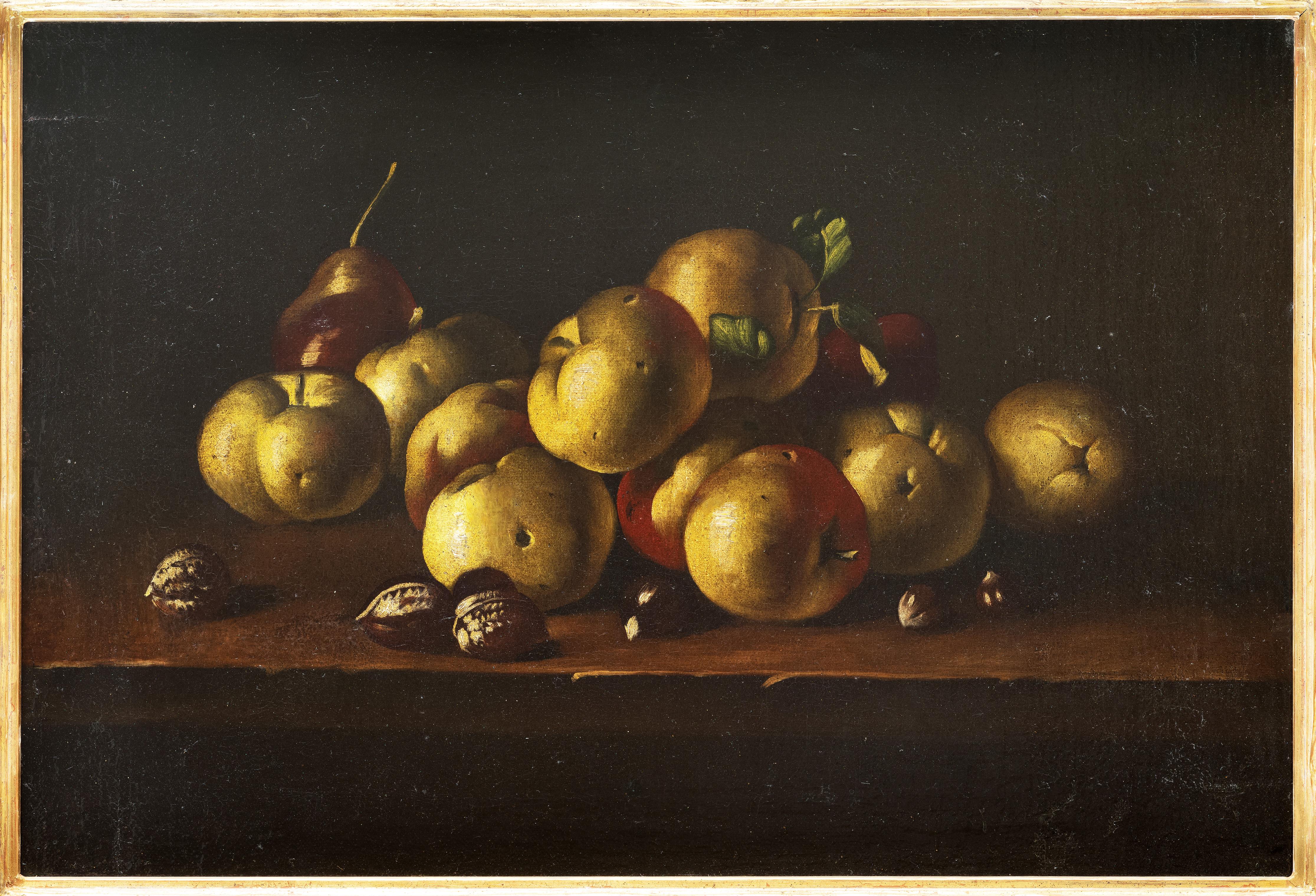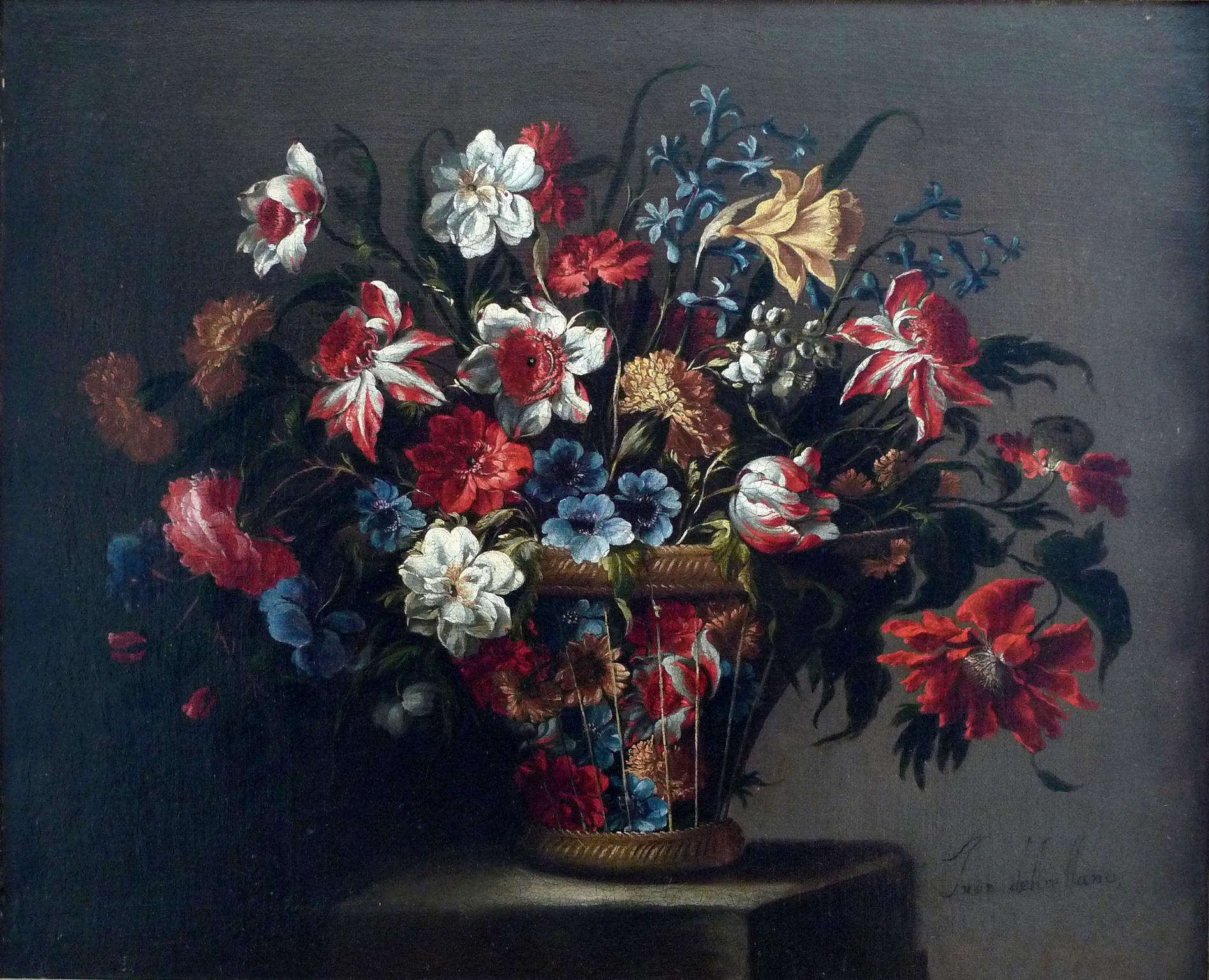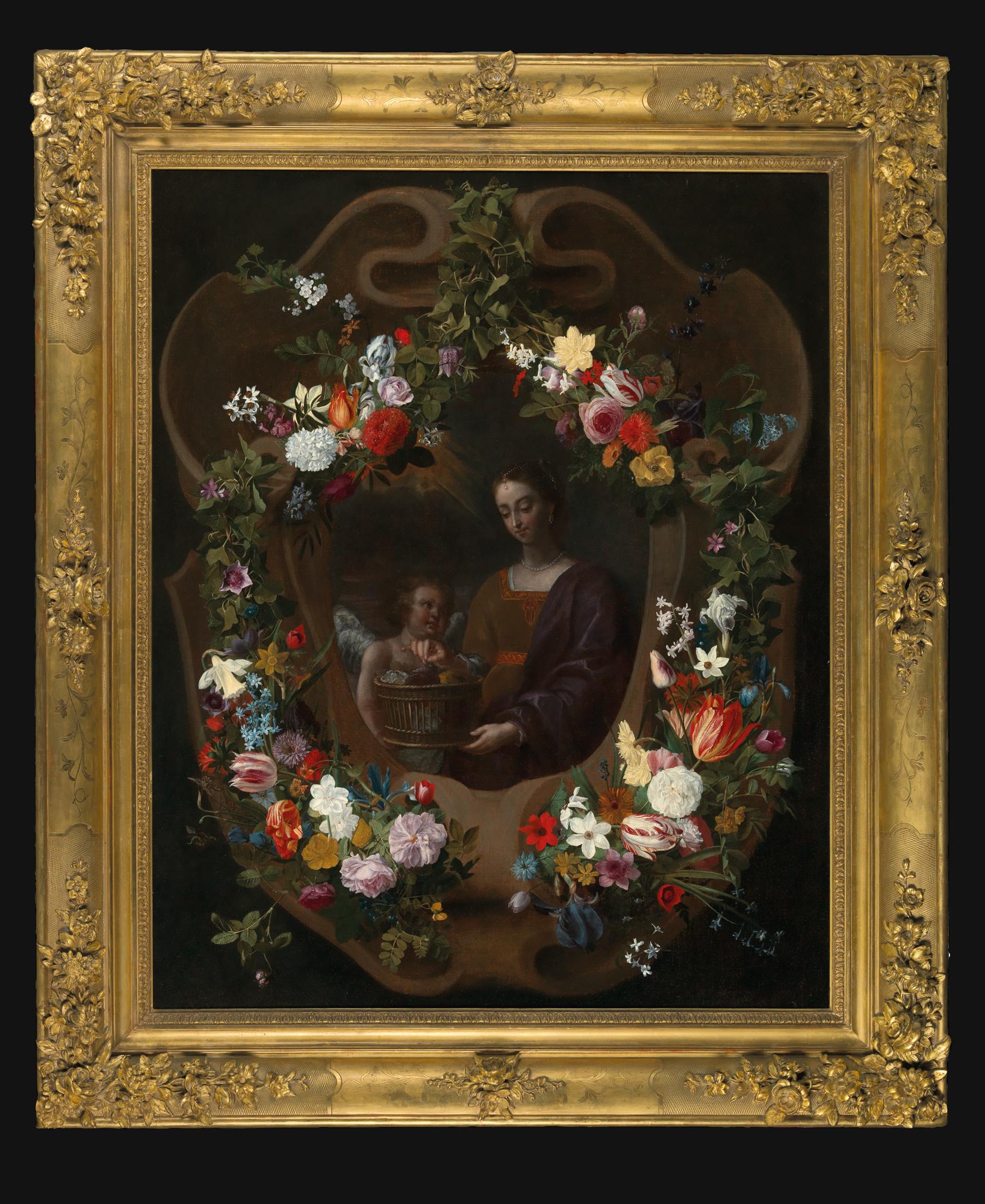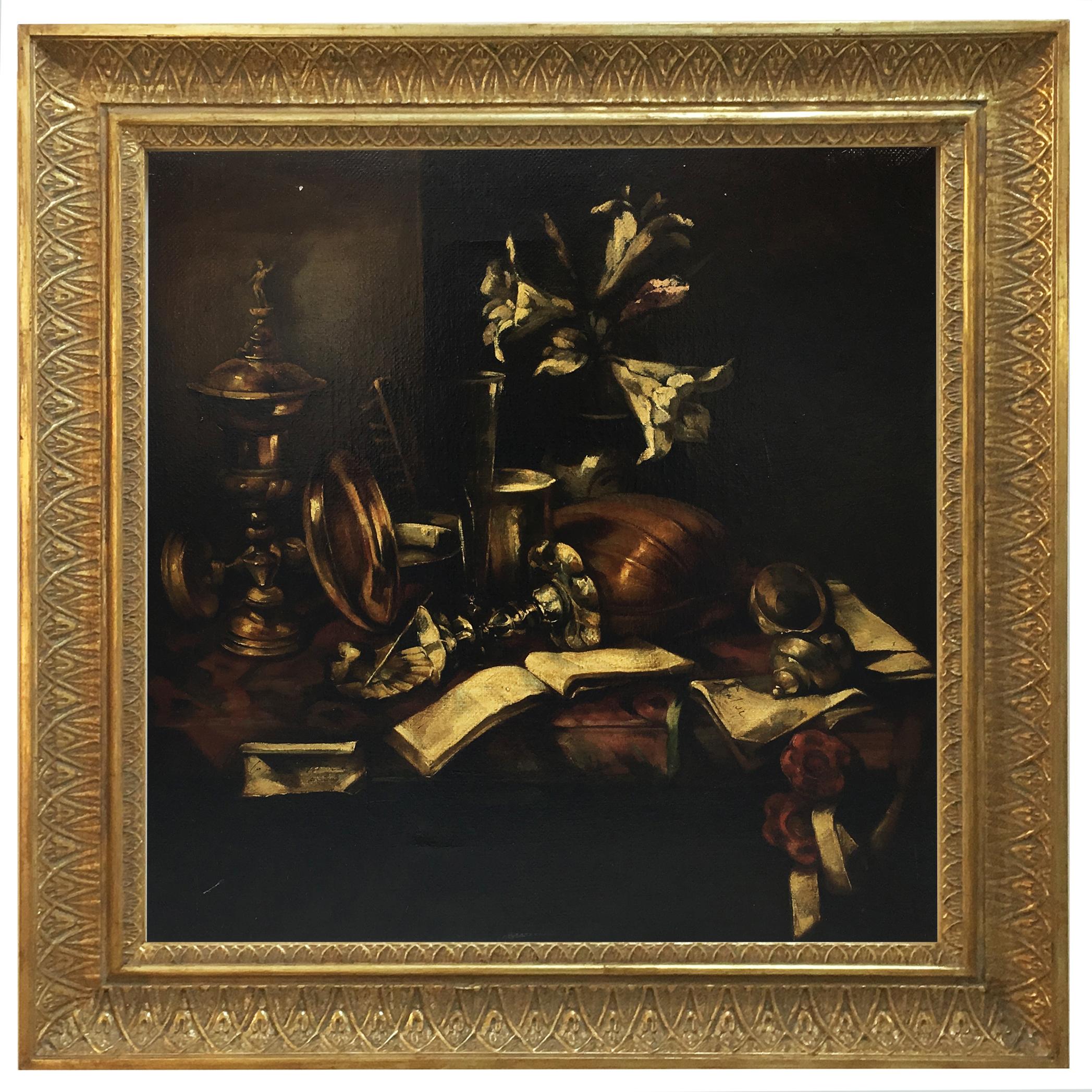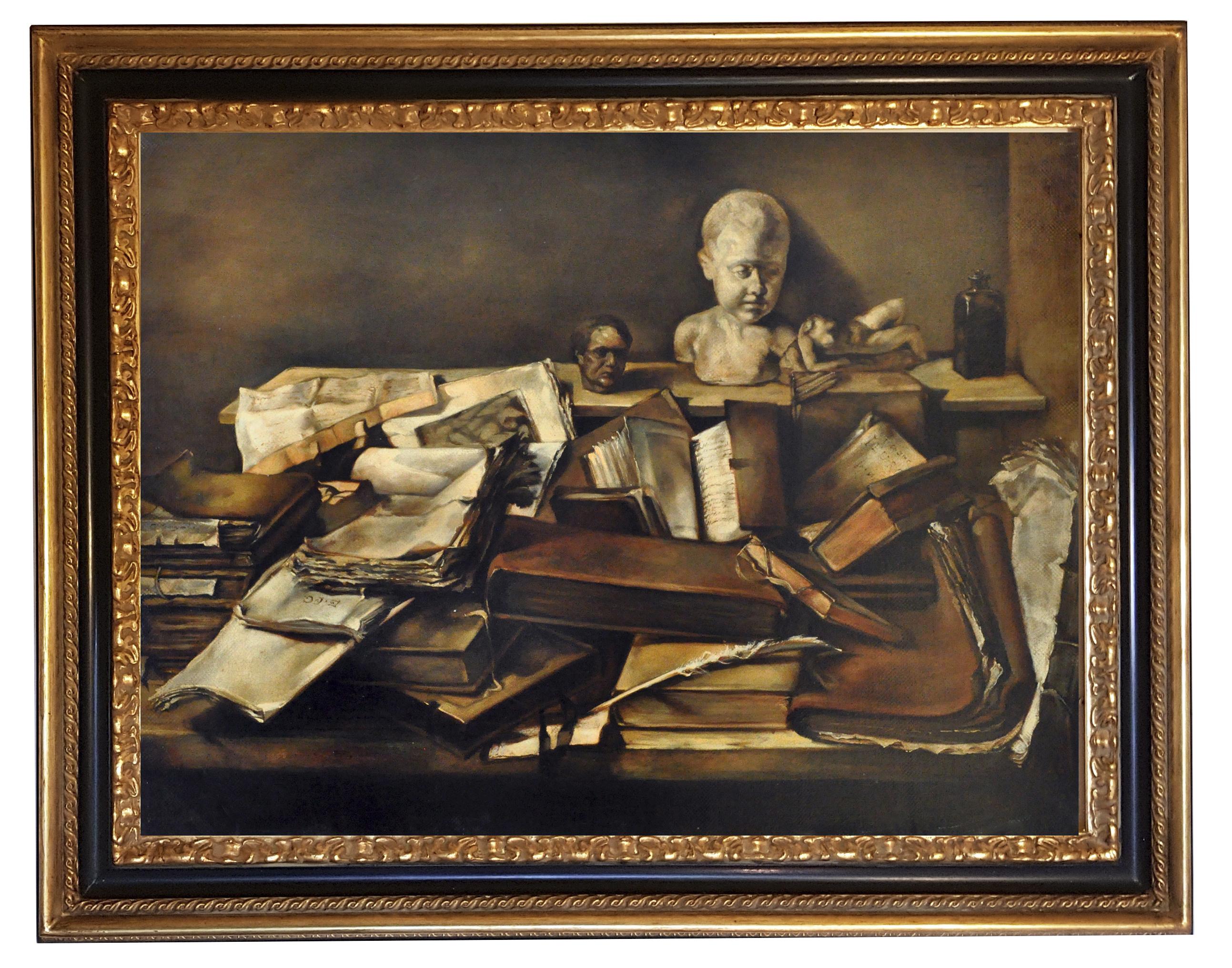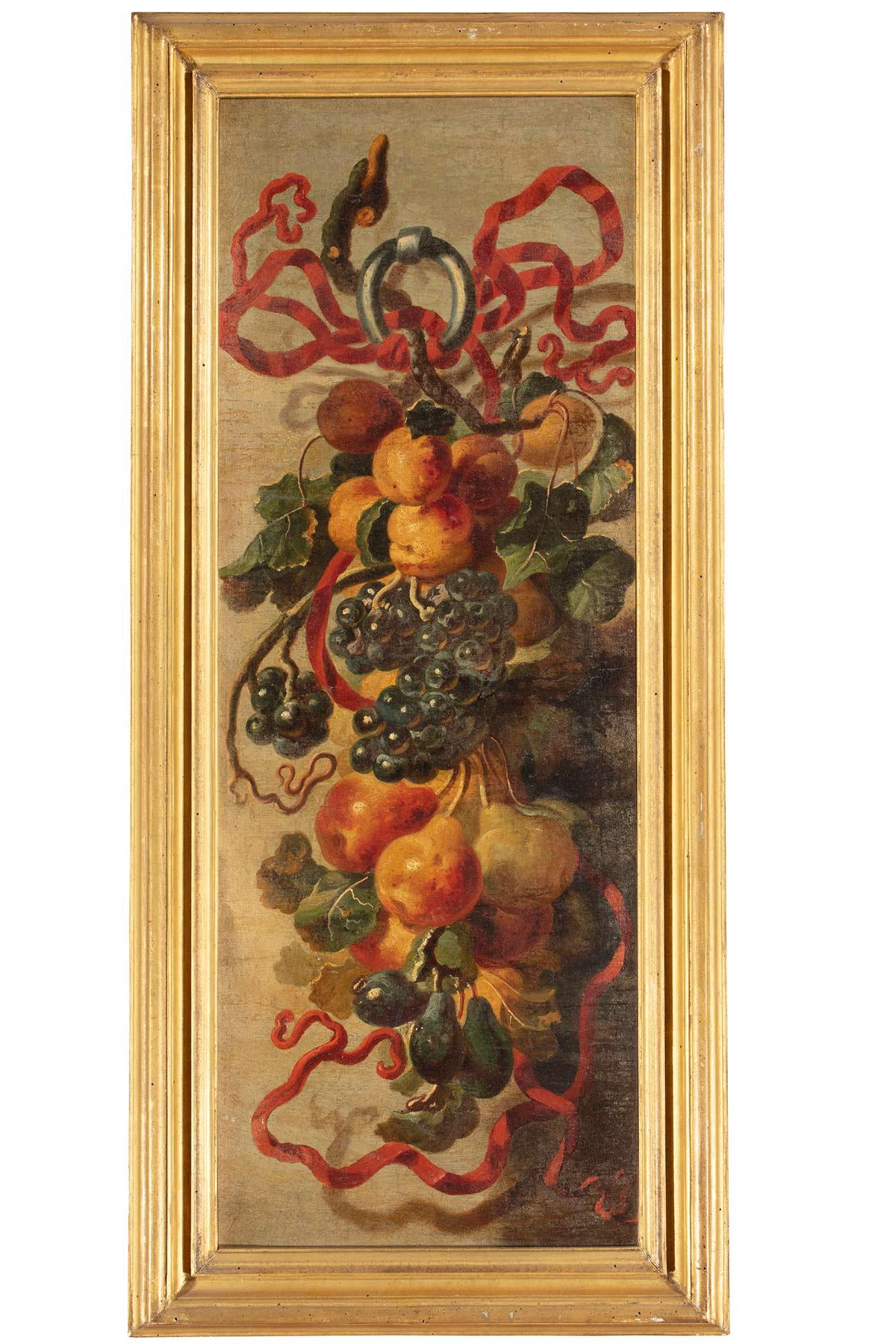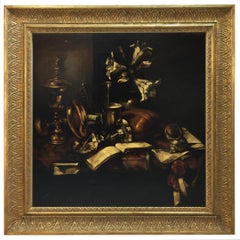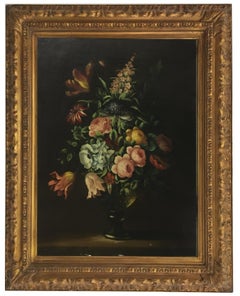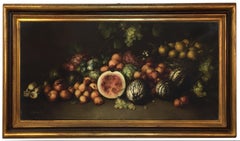FLOWERS - De Tommasi Italian Still Life Oil on Canvas, Italy, 2009
View Similar Items
Want more images or videos?
Request additional images or videos from the seller
1 of 9
Carlo De TommasiFLOWERS - De Tommasi Italian Still Life Oil on Canvas, Italy, 20092009
2009
About the Item
- Creator:Carlo De Tommasi (1951, Italian)
- Creation Year:2009
- Dimensions:Height: 11.82 in (30 cm)Width: 9.45 in (24 cm)
- Medium:
- Movement & Style:
- Period:
- Condition:
- Gallery Location:Napoli, IT
- Reference Number:1stDibs: LU56835251972
About the Seller
4.8
Vetted Seller
These experienced sellers undergo a comprehensive evaluation by our team of in-house experts.
1stDibs seller since 2017
145 sales on 1stDibs
Typical response time: Several days
More From This SellerView All
- Still Life - Francesca Strino Italian oil on canvas paintingBy Francesca StrinoLocated in Napoli, ITStill life - Francesca Strino Italia 2005 - Oil on canvas cm.60x60 Francesca Strino, a Neapolitan painter, realises this still life with great pictorial realism. The painter has her ...Category
Early 2000s Old Masters Still-life Paintings
MaterialsOil, Canvas
- FLOWERS - In the Manner of J.B. Monnoyer - Oil on Canvas Italian PaintingBy Carlo De TommasiLocated in Napoli, ITFlowers - Carlo De Tommasi Italia 2010 - Oil on canvas cm. 80x60 Gold leaf gilded wooden frame cm.106x86 This wonderful painting inspired by Jean Baptiste Monnoyer, shows a vase with...Category
Early 2000s Old Masters Still-life Paintings
MaterialsCanvas, Oil
- STILL LIFE - In the Manner of Adriaen Coorte - Oil on Canvas Italian PaintingBy Salvatore MarinelliLocated in Napoli, ITStill life - Salvatore Marinelli Italia 2007 - Oil on canvas cm. 50x100 Salvatore Marinelli's painting is a still life with black and white grapes, peaches, melon, a basket of pomegranates and figs. Objects and light are intensely studied and are painted with wonderful tenderness with variety of fruits. Marinelli is inspired by one of the many works by Adriaen Coorte...Category
Early 2000s Old Masters Still-life Paintings
MaterialsCanvas, Oil
- Still Life - Francesca Strino Oil on Canvas Italian PaintingBy Francesca StrinoLocated in Napoli, ITStill life - Francesca Strino Italia 2011 - Oil on canvas cm.60x80 . This early work by Francesca Strino is her reinterpretation of the painting 'Still Life with Books' by an unknown...Category
2010s Old Masters Still-life Paintings
MaterialsOil, Canvas
- FLOWERS - Oil on Canvas Italian Still Life PaintingLocated in Napoli, ITFlowers - Oil on canvas cm.70x90, Luigi Degli Espositi, Italy, 2002 Gold leaf gilded wooden frame available on requestCategory
Early 2000s Old Masters Still-life Paintings
MaterialsCanvas, Oil
- STILL LIFE - Dutch School Baroque - Oil on Canvas Italian PaintingBy Salvatore MarinelliLocated in Napoli, ITStill life - Salvatore Marinelli Italia 2007 - Oil on canvas cm. 60x40 Salvatore Marinelli's painting is a beautiful reinterpretation by Pieter Claesz Dutch Baroque painter, one of the best known specialists in still life, having banquet scenes as its main theme. In Marinelli's painting the gold and silver colors emerge clearly on the dark background and on the gold velvet tablecloth...Category
Early 2000s Old Masters Still-life Paintings
MaterialsCanvas, Oil
You May Also Like
- Still Life with Apples and Nuts, 17th Century, Old Master, Spanish PaintingLocated in Greven, DEJuan Sánchez Cotán (1560 - 1627) was one of the most important still life painters in Spain and beyond. He developed a certain type of still life with a ...Category
17th Century Old Masters Still-life Paintings
MaterialsCanvas, Oil
$7,425 Sale Price20% Off - A gentleman’s vicesLocated in London, GBEnglish School, circa 1827 A gentleman’s vices the newspaper dated ‘Sunday December 23 1827’ (upper left) oil on canvas 20 ¾ x 24 ½ in. (52.7 x 62.3 cm.) frame 25 ⅝ x 29 ¼ in. (65.1...Category
Early 19th Century Old Masters Still-life Paintings
MaterialsCanvas, Oil
$9,452 - Still Life with Squash, Gourds, Stoneware, and a Basket with Fruit and CheeseLocated in New York, NYProvenance: Selma Herringman, New York, ca. 1955-2013; thence by descent to: Private Collection, New York, 2013-2020 This seventeenth century Spanish still-life of a laden table, known as a bodegón, stands out for its dramatic lighting and for the detailed description of each object. The artist’s confident use of chiaroscuro enables the sliced-open squash in the left foreground to appear as if emerging out of the darkness and projecting towards the viewer. The light source emanates from the upper left, illuminating the array, and its strength is made apparent by the reflections on the pitcher, pot, and the fruit in the basket. Visible brush strokes accentuate the vegetables’ rough surfaces and delicate interiors. Although the painter of this striking work remains unknown, it is a characteristic example of the pioneering Spanish still-lifes of the baroque period, which brought inanimate objects alive on canvas. In our painting, the knife and the large yellow squash boldly protrude off the table. Balancing objects on the edge of a table was a clever way for still-life painters to emphasize the three-dimensionality of the objects depicted, as well a way to lend a sense of drama to an otherwise static image. The knife here teeters on the edge, appearing as if it might fall off the table and out of the painting at any moment. The shape and consistency of the squash at left is brilliantly conveyed through the light brush strokes that define the vegetable’s fleshy and feathery interior. The smaller gourds—gathered together in a pile—are shrouded partly in darkness and stand out for their rugged, bumpy exterior. The stoneware has a brassy glaze, and the earthy tones of the vessels are carefully modulated by their interaction with the light and shadow that falls across them. The artist has cleverly arranged the still-life in a V-shaped composition, with a triangular slice of cheese standing upright, serving as its pinnacle. Independent still-lifes only became an important pictorial genre in the first years of the seventeenth century. In Italy, and particularly through the revolutionary works of Caravaggio, painted objects became carriers of meaning, and their depiction and arrangement the province of serious artistic scrutiny. Caravaggio famously asserted that it was equally difficult to paint a still-life as it was to paint figures, and the elevation of this new art form would have profound consequences to the present day. In Spain Juan Sanchez Cotan...Category
17th Century Old Masters Still-life Paintings
MaterialsCanvas, Oil
- Early 19th century English Antique Still life of peaches, grapes, melon outdoorsBy George William SartoriusLocated in Woodbury, CTWonderful Early 19th-century Still life of different fruits on an earth bank. Very much painted in the same way as George William Sartorius painted his still lives this piece has al...Category
1810s Old Masters Still-life Paintings
MaterialsCanvas, Oil
$3,960 Sale Price20% OffFree Shipping - "Cesta de flores", 17th Century Oil on Canvas, Still Flowers by Juan de ArellanoBy Juan de ArellanoLocated in Madrid, ESJUAN DE ARELLANO Spanish, 1614 - 1676 Cesta de Flores signed Juan de Arellano (lower lright) oil on canvas original period carved, gilt and polychrome...Category
17th Century Old Masters Still-life Paintings
MaterialsCanvas, Oil
- Grand-Scale Old Master Garland Portrait, 17th Century, Signed & Dated, Rare workLocated in London, GBIndistinctly signed and dated In the first quarter of the 17th century a new form of flower painting was developed in Flemish painting, which, recreated by a large group of artists and workshops, would achieve considerable success throughout the century in much of Europe: the garland of flowers surrounding a central figure. Brueghel de Velurs was the initiator of this type of composition, however, it was his pupil, Daniel Seghers, who was the dominant figure in this specialised production and the creator of a prototype that would serve as a model for the numerous artists who followed in his wake. It seems undeniable that the artist of the present painting had seen the Garlands of Flowers Surrounding a Medallion Depicting the Triumph of Love by Daniel Seghers and Domenico Zampieri (now in the Musée du Louvre in Paris). In our painting, the present floral wreath encircles a carved cartouche within which sits Saint Dorothy of Caesarea and the attribute which often accompanies her in art, a basket of roses. The extremely delicate flowers have been rendered in meticulous detail, so that every species can be identified from exotic tulips to roses, irises and forget-me-nots; this obvious attention to naturalism is inherited from the Flemish manner. Each flower is so precise and refined that they are an individual study in their own right. The still-lifes are from the hand of Jan Anton van den Baren, with the central figures by another accomplished hand. Van den Baren’s arrangement of flowers would have delighted connoisseurs in both Flanders and in Vienna, where the impossibility of their all blooming at the same time of year would have been understood as a further statement of the wonder and beauty of the divine. Van den Baren worked first in Brussels, where he collaborated with Erasmus Quellinus II for the figures in his works, before moving with Archduke Leopold Wilhelm, his patron, to Vienna in 1656, where he instead worked with fellow Flemish émigré painter Nikolaus van Hoy. The iconography relates to an eighth century legend where she was presented a basket of roses by a child. In addition to the brilliance of his handling of still-lifes Van den Baren played an important art historical role as Director of Archduke Leopold Wilhelm’s Picture Gallery in Vienna, then one of the greatest collections in the world and the core of what was to become the present collection of the Kunsthistorisches Museum, Vienna. Van der Baren compiled an inventory of the collection in 1659, and his predecessor as Director of the Archduke’s Picture Gallery (when it was still housed in Flanders), David Teniers, depicted van der Baren (third from right) in his celebrated Archduke Leopold Willem in his gallery at Brussels, conserved at the Kunsthistorisches Museum. It is a shining example of the Flemish Baroque and is a very rare object indeed, considering there are only 14 paintings accepted as authentic works by this artist. We are grateful to Fred Meijer for confirming the attribution to Johannes Antonius van der Baren. A feature of this painting is its outstanding carved and gilded frame with a plethora of flowers and foliage. Titan Fine ArtCategory
17th Century Old Masters Portrait Paintings
MaterialsCanvas, Oil
